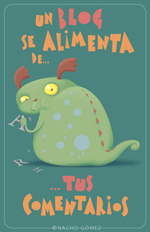 El Physiologus es un bestiario medieval. En él se narran historias de animales y cómo es que sus hábitos se pueden relacionar con pasajes de la Biblia que hablan acerca de la conducta del hombre, de Jesucristo o a veces del diablo. Todo esto con el fin de transmitir una enseñanza a los creyentes cristianos de cómo debería ser su conducta.
El Physiologus es un bestiario medieval. En él se narran historias de animales y cómo es que sus hábitos se pueden relacionar con pasajes de la Biblia que hablan acerca de la conducta del hombre, de Jesucristo o a veces del diablo. Todo esto con el fin de transmitir una enseñanza a los creyentes cristianos de cómo debería ser su conducta.Se le dio el nombre de Physiologus porque en el libro, se habla de lo que “el fisiólogo” dijo respecto a los animales. Ahora bien, a pesar del nombre, por supuesto que no puede ser tomado como un libro científico, sino más bien moralizante. Aun así, es entretenido.
He aquí un fragmento de la traducción directa de la versión armenia al inglés:
Concerning the Chalandrius
 There is a bird called chalandrius mentioned in the Deuteronomy (cf. Dt. 14:18 “heron”).
There is a bird called chalandrius mentioned in the Deuteronomy (cf. Dt. 14:18 “heron”).Physiologus says: it is entirely white and there is absolutely no blackness in it. The excrements of its bowels cure blind eyes.
And it is found in the courts of kings.
If someone is ill, when they take the bird before the ill man, and if the illness is fatal, the chalandrius turns its face away, and everyone knows that he is going to die.
And if the ill man is going to live, the chalandrius stares at him and the ill man–at the chalandrius;
and the chalandrius absorbs the sickness of the ill man, and the sickness is cured, and the ill man lives.
Chalandrius is indeed a nice example of the Saviour;
for our Lord is entirely white, and there is no blackness in him,
as he himself said: “the ruler of this world is coming. He will find nothing against me” (cf. John 14:30).
For he came from heaven to the Jews, and they rejected his divinity from themselves.
He came to the Gentiles, and “he took our illness and cured our diseases (cf. Mt. 8:17), ascended the cross,
whence he “ascended on high and he made captivity captive” (cf. Ps. 68:18, Eph. 4:8).
“He came to his own home, and his people received him not” (John 1:11).
So Physiologus spoke well about the chalandrius.
But perhaps you will say: chalandrius is unclean; how does he represent Christ?
The dragon is unclean (cf. Deut. 14); and how did bear witness and say: “Just as Moses lifted up the serpent in the wilderness, so must the Son of Man be lifted up”? (John 3:14).
But there is something good in the serpent, for it is wise (cf. Gen. 3:1), and in the lion too, for it is mighty, and in the sheep, for it is gentle.
For all creatures are twofold, good and bad.
Physiologus. The Greek and Armenian Versions with a Study of Translation Technique.
Gohar Muradyan
Págs. 144-145
Peeters 2005
Gohar Muradyan
Págs. 144-145
Peeters 2005





























































































No hay comentarios.:
Publicar un comentario